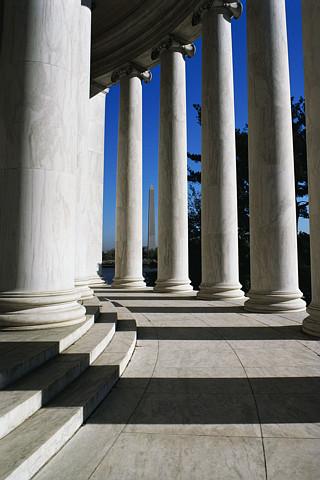O-1 Visa





O-1 Status is a non-immigrant status category for aliens of extraordinary ability in the sciences, arts (including the television and motion picture industry), education, business, or athletics. This is an employment related status that allows qualified aliens to live and work in the United States. O-1 petitions may only be filed by a U.S. employer, a U.S. agent, or a foreign employer through a U.S. agent on behalf of the beneficiary. The O-1 visa is a dual intent visa, meaning that the beneficiary may simultaneously seek permanent resident status while in the U.S. on O-1 without worrying about preconceived intent issues.
There are several different types of visas in the O category:
- O-1A- Individuals with an extraordinary ability in the sciences, education, business, or athletics.
- O-1B- Individuals with an extraordinary ability in the arts or the extraordinary achievement in the motion picture or television industry.
- O-2- Individuals who will accompany an O-1 individual to assist in a specific event or performance.
- O-3- Individuals who are the spouse or children of O-1s and O-2s.
The initial period of stay for O status is up to 3 years. An approved O petition will have a validity period commencing with the date of approval and ending with the date requested by the petitioner. This date is not to exceed the date which USCIS has determined to be necessary to complete the work-related event or activity the alien is in the United States to do. Again, this time period will not exceed 3 years and may certainly be less than that. Any requests for extensions of stay will be considered by USCIS and, once they have determined the time necessary to accomplish the initial event or activity, will be granted in increments of up to 1 year.
Under what circumstances may an O-1 Visa be sought?
As discussed above, O status can be sought by an employer in the US for an alien when a work related event or group of activities require he or she to travel to the United States on a temporary basis. The Code of Federal Regulations defines a qualifying event as “an activity such as, but not limited to, a scientific project, conference, convention, lecture, series, tour, exhibit, business project, academic year, or engagement.”
In addition, a job which may not have a specific engagement or project that exactly fits the above definition may also count, if the job is the “activity” within the alien’s area of extraordinary ability. Activities such as these may include short vacations, promotional appearances, and stopovers which are incidental and/or related to the event.
Benefits of an O Visa
O-1 status is distinguished from other employment related statuses because it is broader in scope than other visa categories, such as H or L. For example, H-1B status is limited to professionals and cannot apply to athletes or entertainers as can O-1 status. In addition, in our experience, many seeking non-immigrant status after the H-1B quota for that fiscal year has already been reached will apply for O-1 status, if they qualify. One of the benefits of the O visa is that it does not have an annual quota. For more information on the H-1B visa program, please click here.
Another important benefit of O-1 status is that it is a viable status to seek for aliens subject to the two-year foreign residency requirement of the J-1 exchange visitor program. Many people who hold or have held J-1 or J-2 status are not permitted to obtain an H or L visa status until they and/or the primary J-1 status holder has spent two years in their home country after the expiration of the J-1 status or a waiver of the two-year residency requirement is obtained. These individuals may obtain O status without fulfilling the two-year residency requirement or getting a waiver of the requirement. In such cases however, the alien may not change status to O-1 in the United States, but must obtain an O-1 visa in their home country after their O-1 application is approved by the USCIS. For more information on the J-1 exchange visitor program, please click here.
Moreover, there is no limit to the maximum length of stay with an O visa because USCIS allows for constant 1-year visa renewals. Unlike H-1B visas, which usually lasts six years, or L-1A visas, which does not allow more than a seven-year stay, the length of stay under the O-1 status is determined by the length of time needed for the alien to perform his duties or activities with the petitioning employer. The USCIS will determine, based on evidence of the work-related event or activity, how long O status will be granted to the beneficiary. Thus, theoretically, there is no specific limit for O-1. In other words, an O-1 holder may stay in the U.S. with longer time than either a H-1B holder or L-1A holder does.
Furthermore, O-1 visas requires more affordable filing fees. Petitioners will be required to pay a $460 filing fee for the I-129 petition and an addition $190 fee for the DS-160 application if the petitioner filing abroad through consular processing. Compared to the fees associated with an H-1B visa which can potentially exceed $5,000, filing fees associated with the O-1 visa are cheaper. However, O visas might require higher attorney’s fees than H-1B if petitioners decide to retain an attorney.
Additionally, O-1 has the advantage of having limited dual intent. With visas with limited dual intent, the visa holder has strong ties with his or her home country while maintaining the intention of possibility staying in the U.S permanently. With limited dual intent visas like O-1, the visa holder may travel in and out of the country at will with a pending I-140. However, unlike dual intent visas, limited dual intent visas does not allow for the visa holder to travel abroad freely with a pending I-485 for fear of abandonment. Although dual intent might be more beneficial, limited dual intent visas is still advantageous compared to visas without immigration intent, such as J or F.
For more information on the O-1 visa, please click one of the following links:
- O-1 Visa
- Process for Obtaining O-1 Status
- Requirements for Obtaining an O-1 Status
- How to Obtain your O-1 Visa
- Assistant and Dependents of O-1 Status Holders
- Duration and Extension of O-1 Status
- Change of Status from O-1 Status
- In Depth O-1 Case Analysis: From O-1 Status to Green Card
- Why O-1 and Not H-1B?
- Services Z&A Provides
- Attorney and Filing fees
- O-1 Visa FAQs




